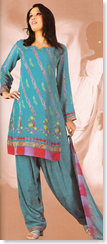Creating the perfect pre-game hairdo can become a very enjoyable, cherished tradition. Friends and teammates can bond before each game as they help each other toss their hair back into fun, athletic hairstyles.
Bangs and long hair can be a liability if you are an athlete. Even short and medium length hair can get in the way while you play your heart out on the field or on the court. The constant tickle of your hair brushing against your face or getting in your eyes can be more than distracting; it can be downright aggravating. And quite honestly, how your hair looks is probably the last thing on your mind as you bolt toward that goal.
Not to worry, though. Several sporty hairstyles come to the rescue so you can focus on your game instead of your mane. Try micro-braids, double French braids, or pre-wrap - a stretchy, foamy material that trainers use for wrapping injuries and athletes use in their hair. You’ll get a no-fail style that keeps the hair out of your eyes and looks great!

Braids both big and small
The twisting motion involved with braiding pulls the hair out of the face and tucks it down along the scalp. For a great athletic hairstyle using double braids, create an even part from your forehead to the nape of your neck with a comb. Tie one pigtail off to the side and work with the other, braiding it as tightly as you can. Fasten the braid with an elastic band. Now repeat for the other side. You may also wish to try this style with French braids.
French braids begin by using hair in smaller sections up at the scalp. Follow these steps to French braid your hair in two pigtails:
- Using the double braid method of parting your hair, start with the first pigtail.
- Up at the top of your head, take three individual, equal sections of hair and cross them one at a time into the center, first from one side and then the other. Pull evenly and tightly for best results.
- Now add a little bit of hair into the side you crossed first and pull that into the center.
- Do the same with the other side. Continue this process, gradually adding more and more hair to each section as you braid your hair to the ends.
- Fasten the completed braid with an elastic band.
- Now repeat this process for the second pigtail.
Another athletic hairstyle variation is the micro-braid approach. Simply braid a few tight mini-braids in the front of your head to pull all the wispies and bangs and loose strands together and away from your eyes and face. Create a row of tight micro-braids, fastening each with a tiny hair band or miniature rubber band. Continue this process for as long as you like. If you have a friend who is willing to help you, consider donning a whole head of micro-braids for a fun and funky look.
Both of these styles look great with pre-wrap headbands. You can add a pre-wrap headband to almost any hairstyle, and the greatest thing is that it keeps the hair out of your face without slipping and sliding around like normal headbands. Pre-wrap is stretchy and composed of a soft, foamy material that doesn’t hurt hair or the scalp.
Pre-wrap for hairstyles
Pre-wrap, also known as underwrap, traditionally serves as a soft and comfortable barrier between athletic tape and the athlete’s skin when a trainer tapes up his or her injuries. It is designed to keep the tape from chafing and sticking to the athlete’s skin. For years if not decades, athletes have been swiping strips of pre-wrap and using them as headbands to keep their hair out of their eyes and off their faces while playing sports. College athletes, teenage athletes, soccer players, softball players, field hockey players, runners and just about any female athletes around enjoy the look and feel of pre-wrap in their hair before, during and after an athletic event.
Pre-wrap is colorful, easy to use, affordable, and best of all, it works. Foamy and stretchy, the pre-wrap material sticks to itself, which means it doesn’t slip like normal headbands. This makes it ideal for use as an inexpensive, versatile headband. You can purchase pre-wrap at most sporting goods stores and online. Pre-wrap is sold in rolls for about $2 or $3, where just one roll can equate to 50 or more headbands!
Most athletic leagues prohibit the use of hair accessories with the exception of elastic ponytail holders. Many leagues, however, permit the use of pre-wrap.
How to use pre-wrap as a headband:
Using pre-wrap as a headband is quick and easy, and takes only seconds. Follow these steps to get your hair ready for the game:
- Grab your favorite color of pre-wrap, or your team colors.
- Quickly wrap the pre-wrap around your head to measure.
- Tear off a strip at the appropriate length.
- Grab one end of the pre-wrap in each hand.
- Roll a bit between your fingers on each end.
- Tie a simple knot with both ends.
- Put your pre-wrap headband on just like a regular headband.
- Go out there, look great and WIN!
How to use pre-wrap without a knot:
As soft as velvet, pre-wrap can stick to itself without sticking to other materials. While most leagues allow the use of pre-wrap, some may specify that the pre-wrap cannot be knotted. You can easily create a pre-wrap headband without ever tying a knot…just follow these simple directions!
- Grab your favorite color of pre-wrap.
- In a lunge position, wrap it around your thigh.
- Wrap it around two or three times.
- Tear off at the appropriate length.
- Start rolling the pre-wrap until it forms a tighter loop.
- Roll your new headband down and off of your leg.
- Put it on your head just like a normal headband. No knot!
Ideas for special and creative pre-wrap hairstyles:
- Twist or braid two or more colors together for a fun and different look. Choose your favorite colors, your team colors or colors at random for a new style you and your friends will love.
- French braid the pre-wrap into your hair – especially if you use the double braids hairstyle above. Tear off a strip of pre-wrap and carefully twist the end around one of the three hair sections in your braid. Keep twisting and crossing the pre-wrap with that same hair section through the whole braid until you get to the end. Fasten the braid as usual. It may be easier if a friend or your mom can help you with this style.
- Instead of twisting and rolling the pre-wrap, wear it flat and wide like a decorative headband. You’ll be amazed at how it still keeps the hair off your face and neck!
- Make tiny bows with your favorite colors of pre-wrap or use teeny pieces to fasten the ends of your micro-braids.
- Get creative; the possibilities are endless!
Besides the basic natural tone, pre-wrap is available in black, blue, green, red, orange, purple, hot pink, light pink, maroon, and yellow/gold. Get psyched up with your team colors, choose your favorite hue or pick a shade based on your mood. Put on your game face, prepare to take on the competition and look great for your photos during the game!
Visit www.pre-wrap.com for more information on pre-wrap or information on how you can get your own



